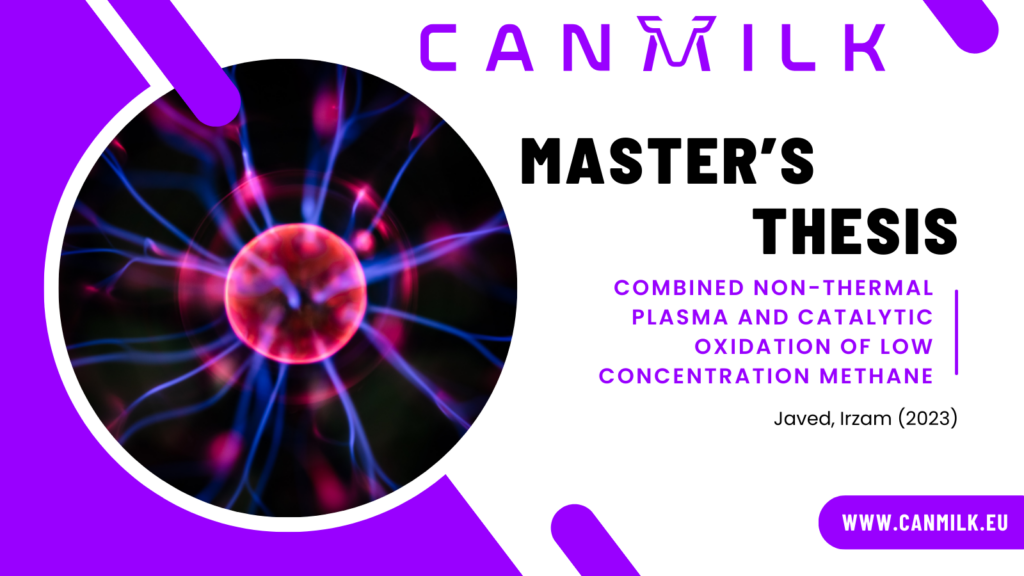
A recent Master’s thesis by Irzam Javed, a student at the Lappeenranta-Lahti University of Technology in Finland, conducted at VTT, explored the effect of non-thermal plasma and a hybridized plasma-catalysis system in methane abatement using a Dielectric Barrier Discharge (DBD) reactor.
The thesis was funded under the Horizon Europe project CANMILK, which endeavors to develop an innovative approach utilizing cold plasma and a catalysis system to abate methane emissions emanating from cow barns. The focus of this process lies in the conversion of methane into carbon dioxide, since methane has 30 times greater potential of global warming than carbon dioxide. The principal objective of this thesis revolved around investigating the impact of plasma alone and various catalysts within the plasma system on methane conversion.
Key Findings:
- Catalysts in the hybridized plasma-catalysis system enhance selectivity towards carbon dioxide.
- Pure plasma systems achieved the highest methane conversion rate of 95%, encompassing both partial and complete oxidation reactions.
- The hybridized system with 1% Pd/Al2O3 showed a slightly lower methane conversion of 88%. However, only complete oxidation occurred without the formation of carbon monoxide.
- There were no significant differences observed in the formation of NOx across the different systems.
The literature review of the thesis provided an overview of methane sources, various methods for methane abatement, and successful case studies. Additionally, the influence of different catalysts on methane conversion was examined. A detailed overview of plasma technology, specifically non-thermal plasma chemistry and its effects, was also presented.
This research offers valuable insights into methane abatement using plasma and catalytic technologies. It lays the groundwork for future studies aiming to optimize systems for reducing methane emissions in the CANMILK project.